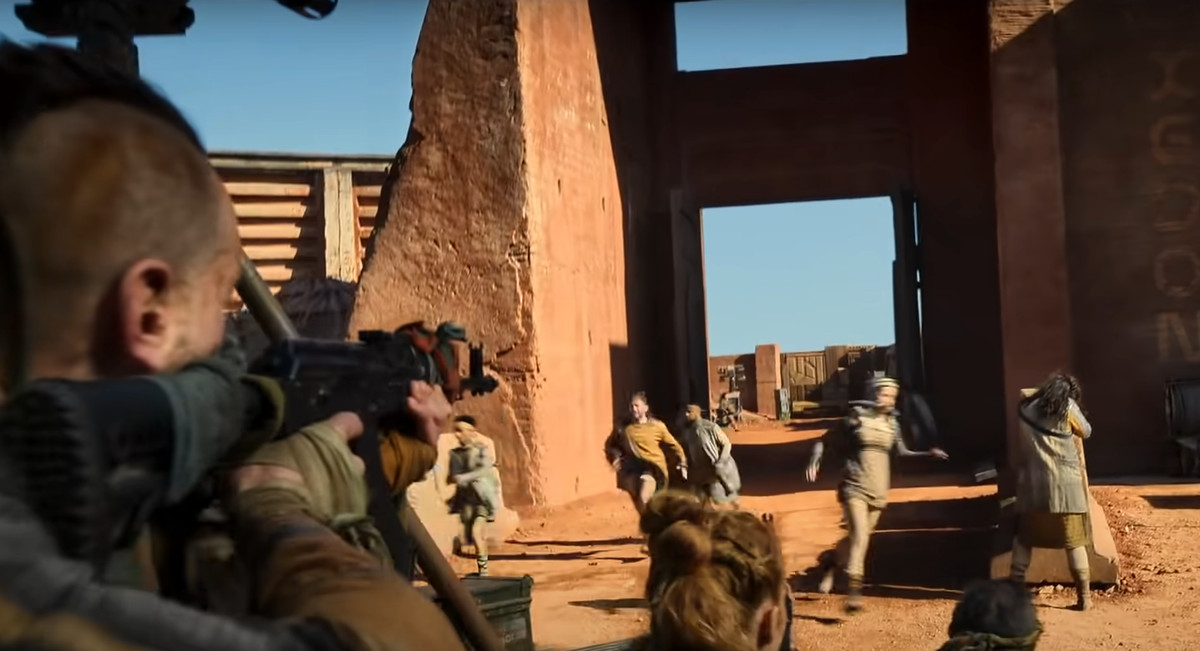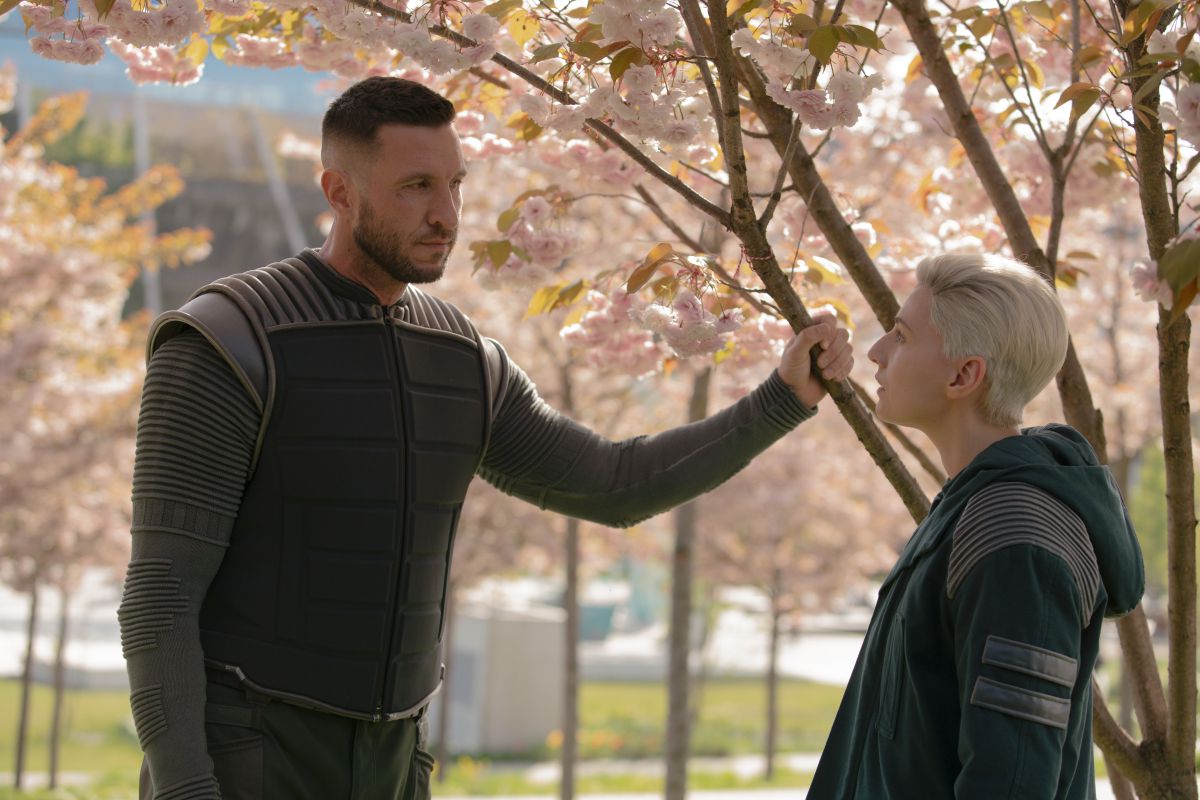Let Master Chief himself explain to you why Halo season 2 is better than season 1
Paramount Plus’ Halo series did not get off to a good start. The first season, which premiered in 2022, seemed torn between trying to match the action of the games and telling a very different story about Master Chief – including a very out-of-place romantic arc and one of the weirdest sex scenes of the year .
But with season 2 of Halo Starting on February 8, and in light of the fall of Reach, Polygon sat down with Master Chief himself, Pablo Schreiber, to talk about what’s changed. And it turns out to be quite something. Thanks in part to the series’ new showrunner, David Wiener, Schreiber seems to think Halo’s best days are ahead. Here’s everything Schreiber had to say about getting rid of romance, taking better action, and keeping Master Chief’s helmet on Halo season 2.
This interview has been condensed and edited for clarity.
Polygon: How do you describe Master Chief’s emotional journey in this season?
Pablo Schreiber: I think in general his journey in the second season is much more connected to the characters around him, much more connected to the relationships that he has. We meet and learn more about each of his teammates. And that affects his journey. And we learn a lot about him from the way he interacts with other members of his team as they begin to distinguish themselves as individuals. We learn a lot about him from the way he interacts with James Ackerson, the new boss of ONI, who is taking over the Spartan program. And we learned a lot about how he deals with Cortana’s absence, and how he gets her back later in the season. And all of these things inform us about his emotional state throughout the season.
What was it like to be able to play all those facets of the character? While, like you said, he learns a little more about himself and reveals more to the audience through his interactions with all these new characters?
The more we see him interact with new and different people, and the more the characters outside of him begin to individualize themselves, the more we learn about him. You learn a lot about someone when they lose things that are important to them. And a lot is lost in the middle of the season. And how he and the rest of the characters respond to that is telling. And you learn a lot about how people get back up again when they’ve been knocked down. And there will be a fair amount of that by the end of the season.
You’ve talked a lot about the difficulties in trading under all the armor and helmet and everything. But I thought the opening of this season in the scene set in Sanctuary was really neat and very poignant, and I’m curious how you feel like you’ve gotten better at emotions and acting through all of that for Season 2.
Um, no, I like the armor. I love acting in it, I love acting in the helmet, I love acting from behind the face mask. You know, I think there’s a lot of things attributed to me that have been misquoted, things that I’ve said or taken out of context. I love Master Chief. I love who he is when he’s in his armor. I love who he is behind the mask. I love the process of being in the armor, and the process of acting from behind the mask. It’s invaluable to the character, as we all know. And it’s a big part of the journey for me.
So, how did I get better? I think I’ve become more patient with those around me when it comes to dealing with the challenges of it, but it was always a challenge. But it was never something for me that I didn’t want to do. I have even advocated keeping the helmet on in situations where it should not come off. You know, there were a lot of moments in the first season where I was asked to take off the helmet so we could see the face. And for me that’s not in character; he wouldn’t do that. And we shouldn’t do that. And it separates us from the character. So it was important to me.
The people who hired me for this work felt it was important to see both aspects of this dual character: Master Chief and John, a soldier who discovers his humanity beneath the armor. So it was (an) important aspect to look underneath and see the face. What’s been really important to me in the second season is to keep track of, you know, the only time we see him under the mask or under the armor is at a time when it makes sense for us to be in a situation. Obviously we don’t take off the helmet during fights. We don’t take the helmet off at any time if it shouldn’t come off. And we really use the time where you see the team in Reach (or) in the UN Security Council in preparation – these are elements that allow you to see John outside his armor around the city of Reach. All of these things are opportunities to build the character in a way that you can’t achieve when he’s in the suit.

Do you feel like putting extra emphasis on all those things, like when he’s in the armor and helmet and when he’s not, is something that David Wiener (who came in as showrunner in Season 2) helped with?
David has a very specific point of view. My job as an actor is to bring the showrunner’s vision to life. In the first season I brought to life the vision of the showrunner I was working with, (and in the) second season my job is to bring David Wiener’s vision to life. Halo season 2, and to do my best to make it the best version for itself. He has a very specific stance on when Master Chief should be shown in armor and when not. I have a specific point of view. And so it was a conversation about when those things, you know, when it should happen and when it shouldn’t happen, but yeah, my job is to bring his vision to life.
I know you recently talked a little bit in an interview, and feel free to correct me if this is out of context or something, about your frustrations with the romantic storyline from Season 1. But I’m curious how you still do that in the character in season 2, even if it wasn’t something you fully agreed with as a direction for the character.
I really liked Makee’s character, I think she’s a great addition. Some people have a problem with her being a human operating within the Covenant. I have no problem with that because the Covenant uses her for her ability as a Reclaimer. I think that works well within the lore. And I think she’s a great addition in terms of what she does for John. They are great mirrors for each other. They are people who have been used by the systems in which they exist, and they recognize that in each other.
So everything about what they do for each other, apart from the fact that the relationship was then used as a romance, is really interesting to me and had a lot of merit and could have been a really interesting storyline. There was no need for romance. It is well. It was what it was. Like I said, I’m an actor who’s here to fulfill the showrunner’s vision. That’s what we did. And now you have to deal with the consequences of that. There’s a new showrunner who has his vision, and he’s going to use those facts to create a dynamic that he thinks is the best version. It’s not romantic. And I prefer that dynamic with Makee’s character. And I think there’s more potential for drama in it. And I love his take on the dynamics between the characters. So that’s what we’re here for.

Photo: Adrienn Szabo/Paramount Plus
Is there anything in particular that you really want people to see, or is there a particular part of the season that you really loved or stood out to you?
Episode 4 is kind of a highlight of the season. It’s a major plot point in Halo lore; we will look at it from a new and unique perspective. I’m really excited for people to see that because I think all Halo fans are familiar with this event. And it’s pretty important for everyone. And also in terms of filmmaking, there were a lot… We use a lot of ‘oners’, which means we create a shot that feels like you never cut, even though we put all these shots together to make it to happen. . And it really creates this pace to the episode that just feels inevitable. It moves forward so quickly and it’s almost impossible to stop it. And it’s just a really interesting way to see this particular event in Halo mythology.
It may seem like the most action the show has ever had, and that seems very exciting.
We had huge action plans for Season 1, these big set pieces. There was the battle of episode 1, there’s the battle of episode 5 and the big battle at the end. And we created these big sets and events for them. (And it) took about a month to photograph each of the things. But the way we shot them was so inefficient. We’ve just become a lot more efficient this season, so the action feels more intense. You feel like you’re more in the action because it’s subjective. You see it from the character’s point of view, (it’s) much more controlled, you’re kind of in it, there’s fog and you can’t quite see what’s happening. So all of these elements lend themselves to action that feels more visceral, more immediate, and more dangerous. But at the same time it is more efficient to shoot and easier to shoot. And we spend less time on it. So it’s kind of the best of both worlds, right? Everyone wins.
